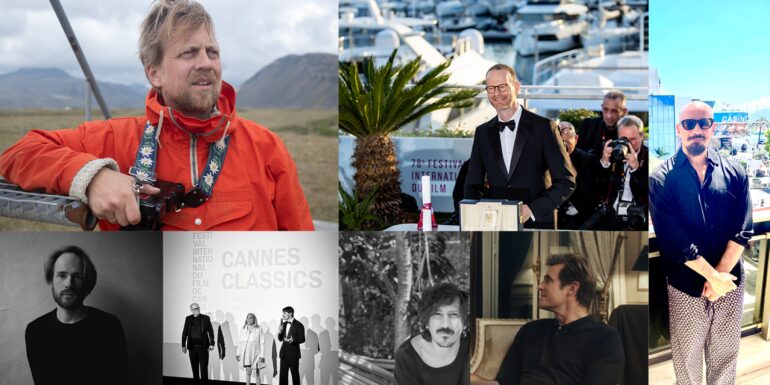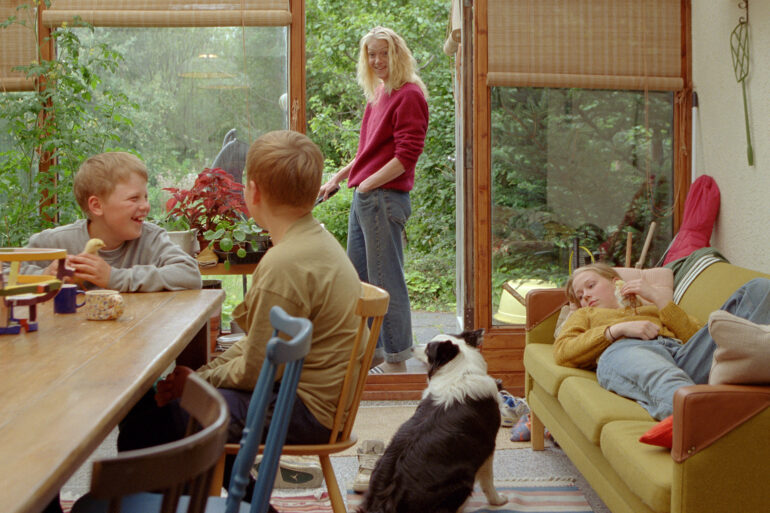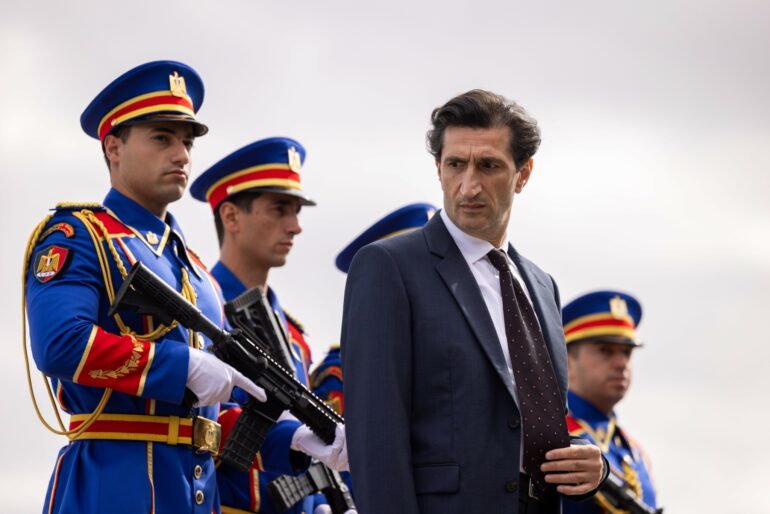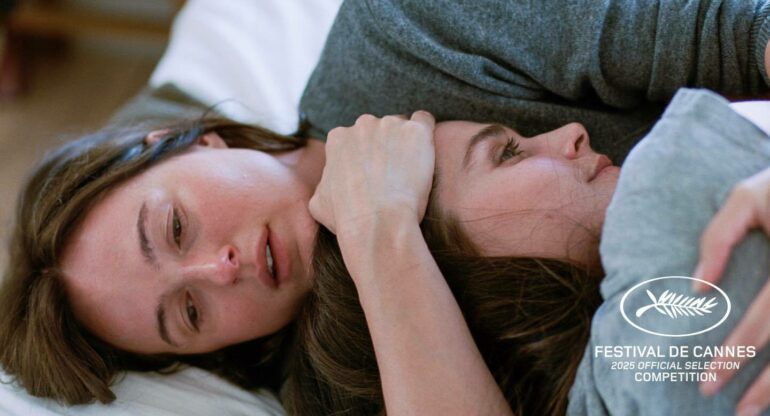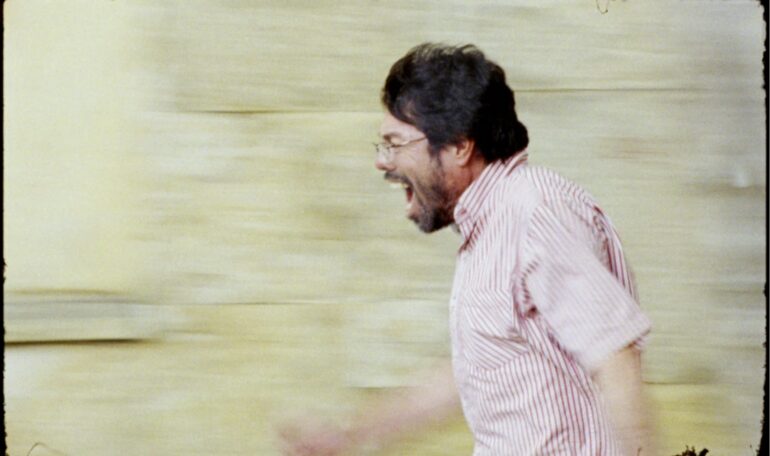WRITTEN BY: Jan Lumholdt
A Finnish musician. An Icelandic artist. A Danish architect. A Norwegian actress. Two Swedish film directors. A Colombian poet. An Egyptian movie star. They are all protagonists of Cannes 2025, often in trouble.
“I think his struggles were a direct requirement for his achievements,” is Jon Asp’s assessment on the great Swedish cinema auteur portrayed in the documentary Being Bo Widerberg (I huvudet på Bo), premiering in this year’s Cannes Classics section.
“And it’s probably even tougher today,” says Asp’s co-director on the film, Mattias Nohrborg,
By coincidence and/or intention, every Nordic title at Cannes 2025 depicts just that; a struggling creator, a predicament more or less close to home to the creators of the films themselves.
«It’s heavily based on my own experience,” says Finnish filmmaker-musician Lauri-Matti Parppei, whose feature debut A Light That Never Goes Out (Jossain on valo joka ei sammu) takes place in the director’s own hometown Rauma by the Bothnian Sea. “It was just me and my friends, and we never stopped creating despite the fact that we never got successful, which we of course wanted to be. But it wasn’t the main goal. We just kept going.”
Here we meet a young classical flute virtuoso, Pauli, who returns to his childhood town after a nervous breakdown and starts making wild avantgarde sounds with some likeminded individuals, and gradually gets back to life.
“I always wanted to depict that state of being super ambitious, but still never knowing if what you do is brilliant or not. After I became a filmmaker, I saw a whole new set of rules. The film’s been in development since 2018, and during this time I had to grow to accept the reality of filmmaking; that I need to please people and be part of the establishment. I can no longer rebel, at least if I want to get the film made. That brought some frustration, coming out of the contradiction of me being very uncompromising in my other art, and risking moving away from those values, the thing that’s so dear to me and my attitude. Am I becoming just another person that will conform? And gradually, that’s what the film too started to be about – finding your own voice and being true to it.”
In The Love That Remains (Ástin sem eftir er), Icelandic director Hlynur Pálmason tells the story of a family in the midst of a separation between the parents, Anna and Magnús. While he works as a fisherman, she is a visual artist – two professions with a large difference in income stability, we learn.
“I totally identify with Anna,” says Pálmason. “The difference from making films is that filmmaking is a train, and once it starts moving, it can’t be stopped, because of all the people on board. As a visual artist, it’s more of a studio life. But what I’ve been trying to do for the last couple of years is to try to live that studio life also as a filmmaker. The normal process of a filmmaker is that you write and develop for a couple of years, then you finance, and then you shoot for a very short period. What I’m trying to do is to have a couple of projects running parallel, and develop and shoot at the same time, then finance when it feels ready, and then do the principal photography over a short period. Even in this film, there are several scenes shot years ago, one from 2017. And the films that I’m working on now are kind of moving together and into each other… It’s really strange at times.”
In Denmark, architecture is taught at the Art Academy, and in the French-Danish The Great Arch (L’inconnu de la Grande Arch), French director Stéphane Demoustier offers a “free” biographical account of architect Johan Otto von Spreckelsen. In 1982, this largely unknown Dane won the competition launched by president François Mitterrand for the design of La Grande Arche de La Défense, the triumphal arch that would be inaugurated for the French bicentennial celebration in 1989. Creative conflicts troubled the process, and the architect himself passed away in 1987, never experiencing the completion of the monument.
“The architect is definitely a creative artist, and the architect shares with the filmmaker this double-edged sword of also being part of an industry,” says Demoustier. “I can easily identify with him and in his suffering in the process of artistic creation. In the stage of fulfilling a film project, the director has to deal with reality, has to adapt his own ambitions to the constraints that are put in front of him. While I’ve succeeded in making just the film I wanted to make, von Spreckelsen’s experience went less well.”
Claes Bang, who recognised the idealism and the uncompromising ways of his character, plays von Spreckelsen. “He reminds me of myself. Those character traits are tremendously exciting, and also what I personally put as absolute priorities, both in my choice of projects and in the interpretations. I like ideals; the higher, the better.”
In Eagles of the Republic, Sweden’s Tarik Saleh visits the once vibrant Egyptian film industry, currently troubled by censorship under both religious and political pressure. The central character is an actor, even a star, played by Fares Fares. This star, George Fahmy, known as “The Pharaoh of the Screen”, is pulled straight into deep-water political intrigue when he’s “asked” to play the country’s president Abdel Fattah el-Sisi in a grand-scale biopic. The director feels close to both the film’s “hero” and its “villain”, the political official always on set, to watch, correct and report.
“I love actors, but you never know if they’re playing a part. What happens when you remove that mask? That’s something I wanted to investigate. The most personal thing for me during the shoot was the relationship between actor and director – who’s really in charge? There are parts of Fares’ character I identify with, but at the end of the day, I’m really Mansour, the official and also the de facto director here.”
Joachim Trier has both a director (Stellan Skarsgård) and an actress (Renate Reinsve) on centre stage in Sentimental Value (Affeksjonsverdi). She’s struggling with stage fright, and he, unproductive for many years, tries to make a comeback. Quite unlike Trier himself.
“The irony is that I feel I’ve been successful ever since my first film Reprise in 2006 was bought by Miramax. I'm from Norway. I was like, shit, man, these films are getting distributed around the world. And now I’m on my fifth. But I feel anxious every time; it’s difficult to write. Really hard. Like, what can I do? I can't make this a film for anyone else. I always wanted to do final cut films with my group of friends and do it our way. So that's what we've done.”
Similarities with Trier’s own grandfather Erik Løchen are also notably few. His Cannes breakthrough The Chasers (Jakten, 1959) didn’t work with Norwegian filmgoers, and only in 1972 did he direct his second and last feature, Remonstrance (Motforestilling).
“My grandfather was in Cannes in 1960, and the French New Wave was the big thing. Stellan’s character is a different generation, more the type of a respected 1990s European auteur, not based on anyone particular. It hit me that many of them have had their films premiered where mine was shown the other day. Strange feeling.”
The Grand Prix for Sentimental Value was one of two major 2025 Cannes awards for Nordic productions. The other one, the Un Certain Regard Jury Prize for Best Directing, went to the Colombian director Simón Mesa Soto, who for ten years has co-produced his films together with Sweden. A Poet (Un Poeta) exposes the probably most struggling of all the artists up on the Cannes 2025 screen, the down-and-out, hard-drinking and self-pitying Oscar, whose great monument to culture consists of two tattered poetry collections from the early 1990s. The director’s choice of subject was loud and clear.
“Already when I made my first film, I was troubled by the idea of cinema. In Colombia it’s difficult to make film. I work as a teacher of cinema, that’s what pays my bills. When I shoot, I quit for a year, then I go back to teaching – I’m probably back again for the next semester. Just before this one, I was thinking of quitting. Instead, I decided to make this film, which is the worst version of myself in 20 years.”
All directors are currently preparing new films, in some cases several parallel ones. Lauri-Matti Parppei, who has two projects going, still persists:
”That this one actually got made is just a miracle!”
